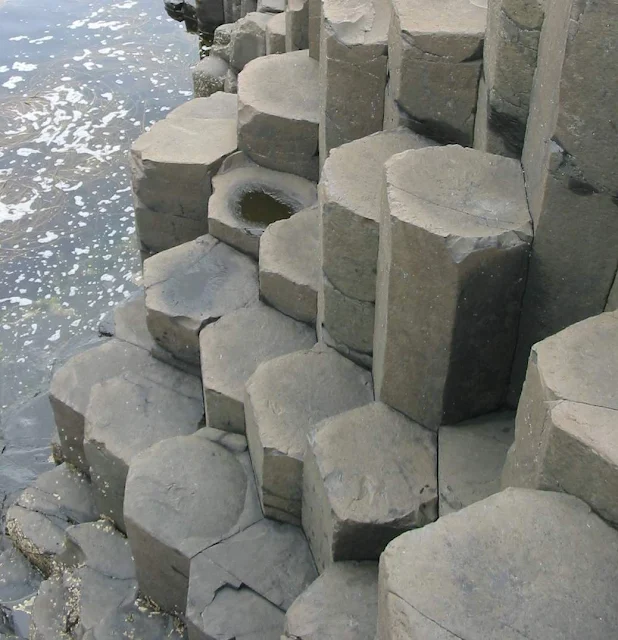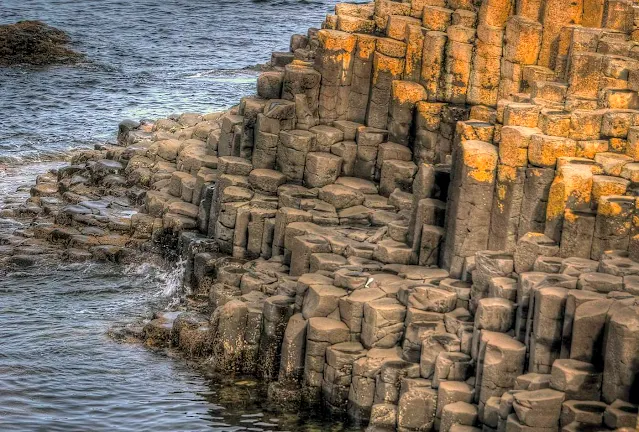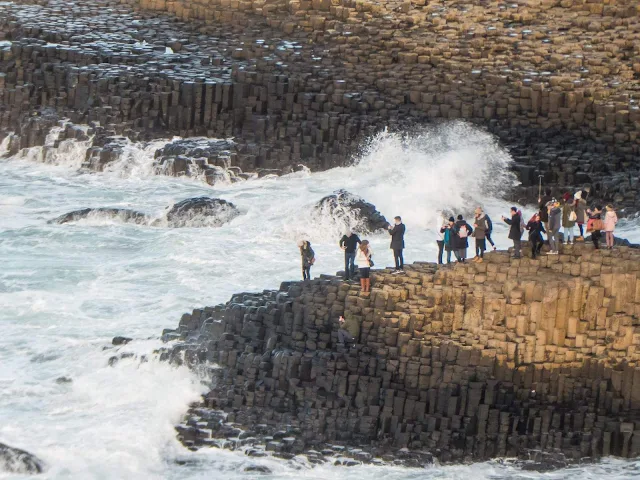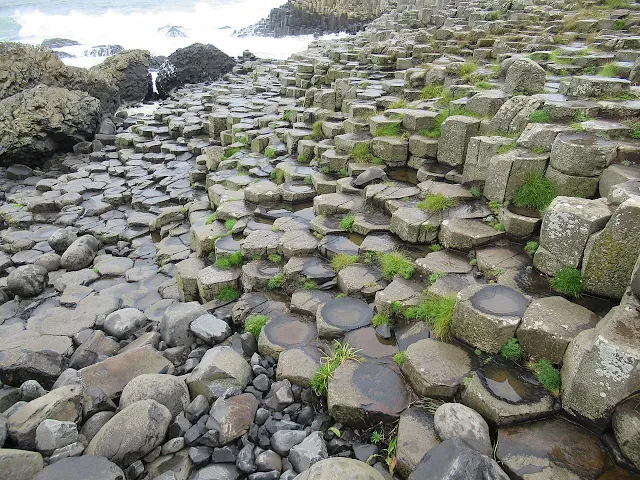Facts About The Giant's Causeway - Photos
The Giant's Causeway is a natural wonder located on the northern coast of County Antrim, Northern Ireland. It consists of around 40,000 tightly packed hexagonal basalt columns, the result of volcanic activity millions of years ago. The columns are mostly three-sided and reach up to 39 feet (12 meters) high.
11 Facts about the Giant's Causeway
1-Formation: The causeway is composed almost entirely of basalt, a fine-grained volcanic rock rich in minerals like pyroxene and plagioclase feldspar. The origin of the columns can be attributed to a volcanic eruption that occurred approximately 60 million years ago during the Paleogene period. Molten lava flowed across the landscape, eventually filling pre-existing valleys and solidifying into a thick basalt plateau. As this layer cooled, it contracted, generating internal stresses that manifested as vertical fractures throughout the basalt. These fractures, predominantly hexagonal due to geometric efficiency in stress distribution, ultimately led to the formation of the individual columns observed today.
 |
| Giants Causeway, Northern Ireland |
2-Column Dimensions: Individual column diameters vary between 30 and 150 centimeters (12-60 inches), with an average height of 6 meters (20 feet). The tallest column called the Chimney Stack. reaches 12 meters (39 feet). The main section of the Causeway stretches for approximately 1 kilometer (0.6 miles), extending into the sea with submerged columns visible during low tide.
3-Predominantly Hexagonal: While some columns feature four, five, seven, or even eight sides, roughly 60% exhibit the classic hexagonal shape. This geometric pattern results from the most efficient way for the basalt to crack and minimize energy expenditure during contraction.
 |
| Giant's Causeway Column Dimensions and shapes |
4-Hidden Depths: The causeway extends underwater, with some columns visible during low tide, offering a glimpse into the submerged portion.
5-Location: The Giant's Causeway is located on the northern coast of County Antrim, Northern Ireland. It is about 30 miles (48 kilometers) northwest of Belfast. (55°11′28″N 6°29′23″W)
6-Diverse Ecosystem: The causeway boasts a unique ecosystem despite its rocky terrain. Seabirds like fulmars, kittiwakes, and puffins nest along the cliffs, while rare wildflowers like sea campion and spring squill flourish in crevices.
7-The Giant's Causeway has been a UNESCO World Heritage Site since 1986 and is one of the most popular tourist attractions in Northern Ireland.
 |
| The causeway columns extends underwater |
8-It is a popular spot for filming, having been featured in movies such as "Miss Peregrine's Home for Peculiar Children" and "Game of Thrones."
9-Tourist Attraction: The Giant's Causeway is a major tourist attraction, drawing visitors from around the world. It offers breathtaking views of the North Atlantic Ocean and the surrounding cliffs, making it a popular destination for nature enthusiasts and photographers.
 |
| Basalt Columns at Giant's Causeway in Northern Ireland. |
10-National Trust Management: The site is managed by the National Trust, a conservation organization in the United Kingdom. The National Trust provides facilities for visitors, including a visitor center with exhibits and guided tours.
 |
| Giant's Causeway aerial view |
11-Legends and Folklore: According to Irish folklore, the causeway was built by the giant Finn McCool. He allegedly created the Giant's Causeway as a pathway to Scotland to challenge another giant, Benandonner. There are similar basalt formations on the Scottish island of Staffa.
These facts highlight the geological significance, cultural heritage, and natural beauty of the Giant's Causeway, making it a truly remarkable destination to explore.



%20(1).webp)





